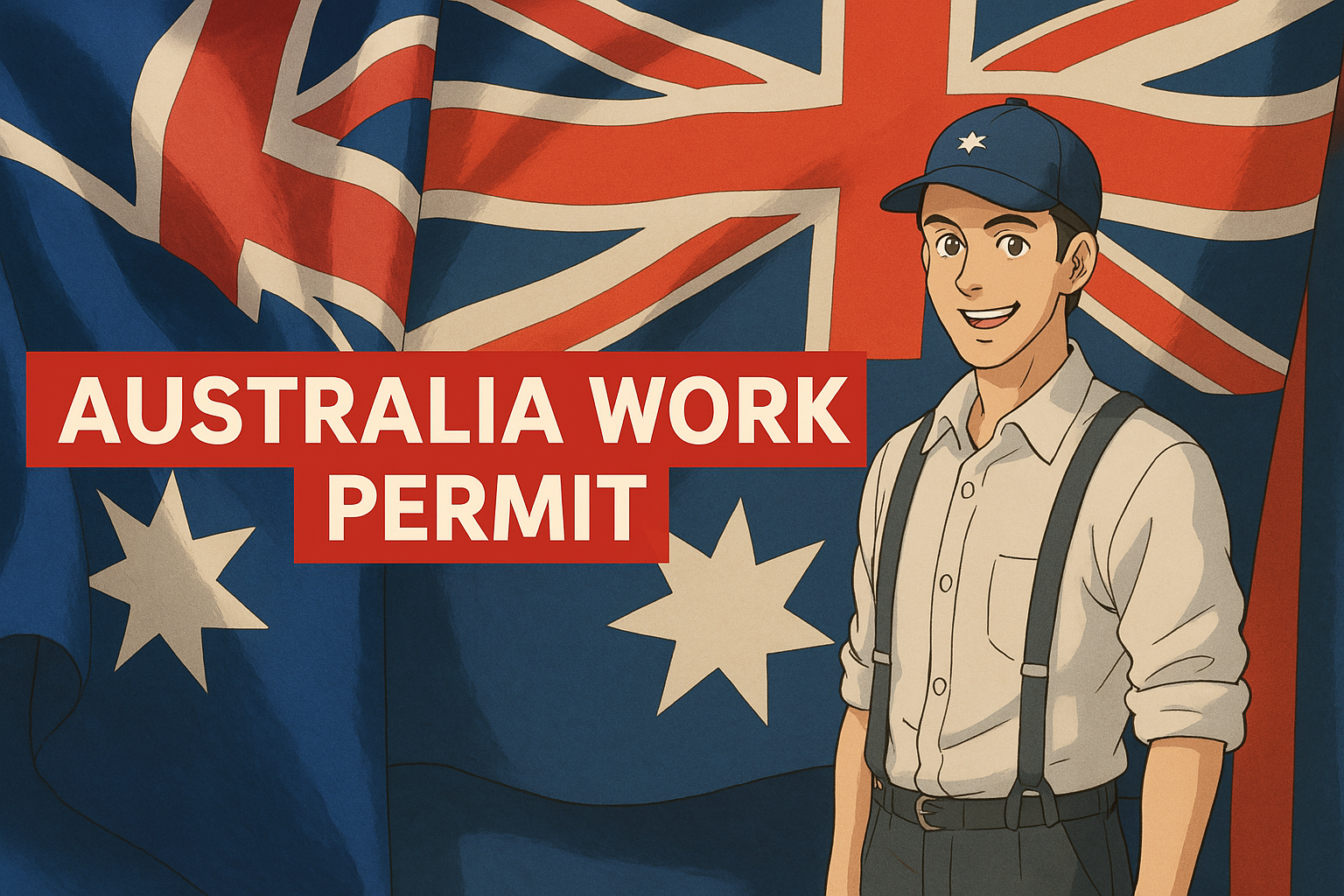Australia is a popular destination for skilled workers, students, and professionals looking to build a career. If you’re planning to work in Australia, obtaining the right work permit or visa is crucial. In this comprehensive guide, we’ll walk you through everything you need to know about getting a work permit in Australia, including eligibility, application processes, visa types, and tips for a successful application.
Understanding Work Permits in Australia
Unlike some other countries, Australia does not issue a generic “work permit.” Instead, individuals who wish to work in Australia must obtain the appropriate work visa. The type of visa you need depends on your occupation, qualifications, and the duration of your stay. Some of the most common Australian work visas include:
- Temporary Skill Shortage (TSS) Visa (Subclass 482)
- Skilled Independent Visa (Subclass 189)
- Skilled Nominated Visa (Subclass 190)
- Employer-Sponsored Visas (Subclass 186, 187, 494)
- Working Holiday Visa (Subclass 417, 462)
- Graduate Visa (Subclass 485)
Each visa has specific requirements, so it’s essential to understand which one is right for you before applying.
Step-by-Step Guide to Getting a Work Permit in Australia
Step 1: Determine Your Eligibility
Before applying for a work visa, check whether you meet the eligibility requirements. The key factors considered include:
- Age (some visas have age restrictions)
- English language proficiency (IELTS, TOEFL, or PTE scores may be required)
- Relevant skills and qualifications
- Occupation listed on the Skilled Occupation List (SOL)
- Health and character requirements
You can use the Australian Government’s Visa Finder Tool to determine which visa suits you best.
Step 2: Choose the Right Visa Type
Temporary Skill Shortage (TSS) Visa (Subclass 482)
- For skilled workers with employer sponsorship.
- Requires nomination by an approved Australian employer.
- Allows you to work in Australia for up to 4 years.
- Requires minimum work experience in the nominated occupation.
Skilled Independent Visa (Subclass 189)
- For highly skilled workers with no employer sponsorship.
- Based on a points test (minimum score: 65 points).
- Provides permanent residency in Australia.
- Requires an occupation from the Medium and Long-Term Strategic Skills List (MLTSSL).
Skilled Nominated Visa (Subclass 190)
- Similar to Subclass 189 but requires state or territory nomination.
- Additional points for state sponsorship.
Employer-Sponsored Visas (Subclass 186, 187, 494)
- Allows Australian employers to sponsor overseas workers.
- Provides pathways to permanent residency.
Working Holiday Visa (Subclass 417, 462)
- Allows young adults (18-30/35 years) from eligible countries to work temporarily.
- Valid for up to 12 months, with possible extensions.
Graduate Visa (Subclass 485)
- For international students who have completed studies in Australia.
- Allows temporary work rights (18 months to 4 years, depending on qualifications).
Step 3: Prepare Required Documents
Each visa type requires different documents, but common requirements include:
- Valid Passport (must be valid for the duration of your stay)
- Skills Assessment (for skilled migration visas, issued by an Australian authority)
- English Language Test Results (IELTS, TOEFL, or PTE)
- Health Examination (medical check-up as required by the Australian government)
- Character Certificate (police clearance from home country)
- Job Offer Letter (for employer-sponsored visas)
Ensure all documents are accurate and up to date to avoid processing delays.
Step 4: Submit an Expression of Interest (EOI) (For Points-Based Visas)
For skilled migration visas (Subclass 189, 190, and 491), you must submit an Expression of Interest (EOI) through the SkillSelect system. This step involves:
- Creating an online profile in SkillSelect.
- Filling in details about your skills, work experience, and qualifications.
- Waiting for an invitation to apply for a visa.
Only candidates with high-ranking points receive invitations to apply.
Step 5: Apply for the Work Visa
Once invited (or if applying for a sponsored visa), follow these steps:
- Complete the online visa application on the Department of Home Affairs website.
- Attach supporting documents (certified copies of educational and work documents).
- Pay the visa application fee (varies depending on visa type).
- Submit the application and wait for a decision.
Processing times range from weeks to several months, depending on visa type and individual circumstances.
Step 6: Attend Interviews or Biometrics Appointment (If Required)
Some applicants may be asked to:
- Attend an interview with Australian immigration officials.
- Provide biometric information (fingerprints and photographs).
Respond promptly to any requests from the Australian immigration authorities to avoid delays.
Step 7: Receive Visa Decision & Prepare for Travel
- If your application is approved, you will receive a visa grant notice.
- Review visa conditions (such as work limitations and expiry date).
- Book flights and make arrangements to settle in Australia.
If your application is denied, you may be able to appeal the decision or reapply after improving your qualifications.
Additional Tips for a Successful Work Permit Application
- Ensure your occupation is on the Skilled Occupation List before applying.
- Gain employer sponsorship if possible, as sponsored visas often have faster processing.
- Improve your English test scores to increase eligibility.
- Provide complete and accurate documents to avoid visa rejection.
- Seek help from a registered migration agent for complex cases.
Conclusion
Securing a work permit in Australia requires careful planning and adherence to immigration laws. By understanding visa options, gathering required documents, and following the correct application process, you can successfully obtain a work visa and start your career in Australia. Always check the latest immigration policies on the Australian Department of Home Affairs website to ensure you have the most up-to-date information.
Need Help with Your Work Visa?
If you’re unsure about which visa to apply for or need assistance with your application, consult a licensed migration agent or immigration lawyer for expert guidance.
By following these steps, you’ll be well on your way to legally working in Australia. Best of luck with your journey!
